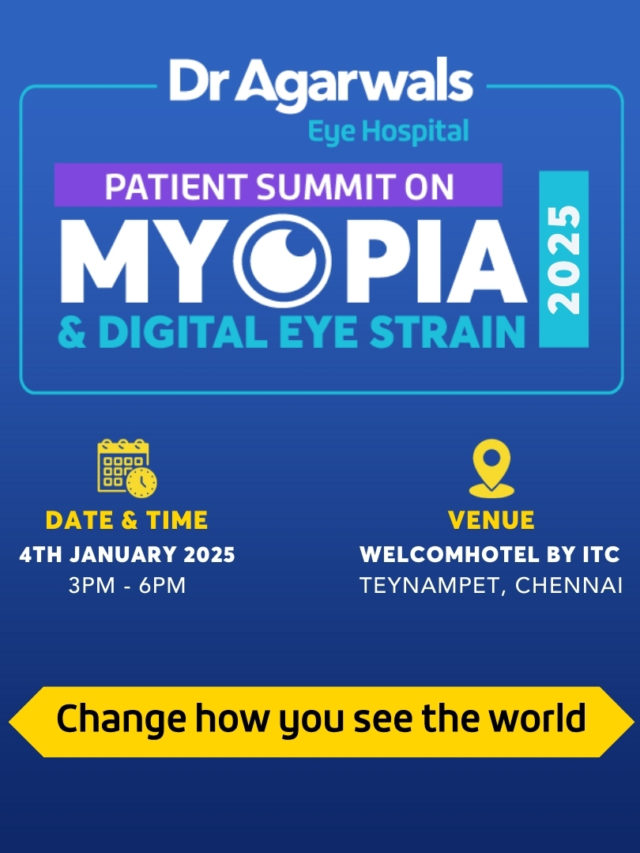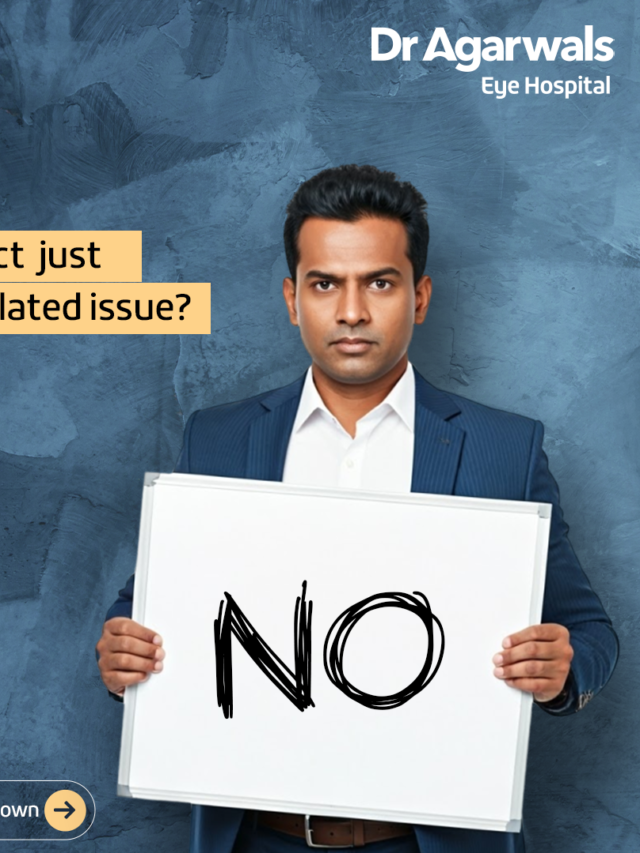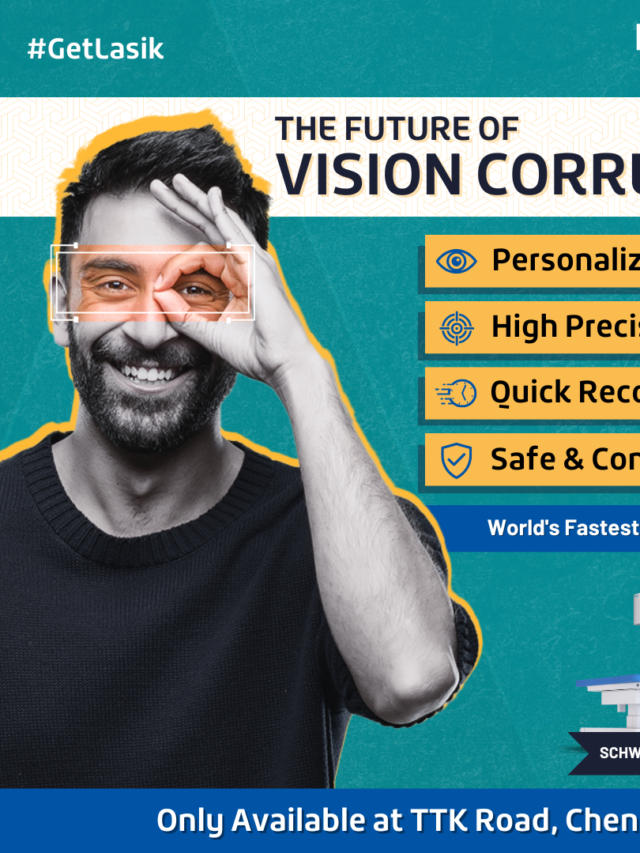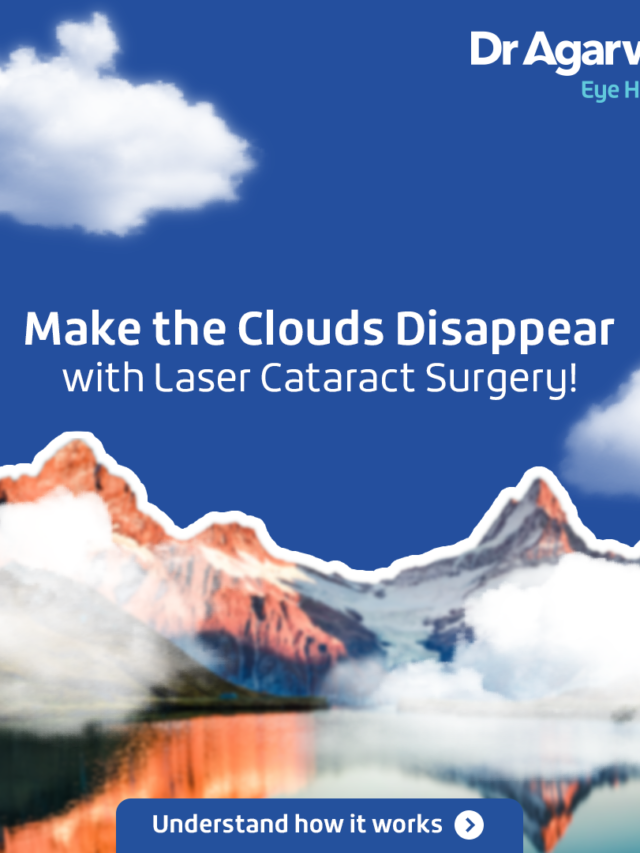The significance of clear vision lies in the sharpness of light on the retina. In situations where the eye becomes longer than usual, light is focused before the retina rather than on it, resulting in a blurred image of the distance, a condition called myopia. But when this refractive error is severe, it is referred to as high myopia, a more severe and progressive form of nearsightedness.
The article describes the definition of high myopia, its causes, symptoms, and treatment, as well as preventive and management measures. Education and treatment of this condition at an early age may preserve eye health in the long term and prevent complications that can cause irreversible vision impairment.
What is High Myopia?
Higher myopia is a severe type of nearsightedness in which the refractive power is greater than -6.00 diopters. In a straightforward sense, it means that objects that are far away are so blurry that they are hard to see, whereas those that are close are clear.
The meaning of high myopia is that the eyeball becomes too long, and consequently, the retina and other sensitive tissues in the eye stretch. This not only makes one more reliant on the strong corrective lenses but also makes one more prone to complications like retinal detachment, glaucoma and macular degeneration.
How High Myopia Differs from Regular Myopia
Although the two conditions are similar in that they both result in blurred distance vision, high myopia differs in severity and long-term risks compared to regular myopia. The refractive error in normal myopia is usually between -0.50 and -5.75 dioptres and can be readily corrected with a pair of spectacles or contact lenses.
High myopia, on the other hand, is a refractive error of -6.00 dioptres or more, accompanied by changes in the eye structure. Complications of the retina and optic nerve can result from these alterations.
Causes and Risk Factors of High Myopia
The causes of high myopia are:
- Genetic Factors: Children with one or both myopic parents are at greater risk of developing high myopia.
- Environmental Factors: Excessive near work, prolonged screen time, and limited outdoor exposure contribute to the eye’s elongation
- Early-Onset Myopia: Myopia that begins in early childhood tends to progress more rapidly and reach higher levels by adulthood.
- Lifestyle Factors: Inadequate outdoor activity and poor visual habits, like reading too closely, can accelerate progression.
Symptoms of High Myopia
Common signs include:
- Blurred vision for distant objects
- Eye strain and headaches after reading or screen use
- Squinting to focus on distant details
- Poor night vision
- Increased floaters or flashes of light (possible retinal warning signs)
Because high myopia stretches the retina and weakens the eye’s tissues, it may lead to complications such as retinal tears, macular degeneration, or glaucoma if left unchecked.
Myopia Progression and Stabilisation.
Myopia typically develops in childhood and adolescence, when the eyeball is still in a developmental stage. Sometimes, eye elongation increases during rapid growth in these years, which aggravates refractive error.
By the early twenties, the development tends to level off or decelerate as eye development halts.
Treatment Options for High Myopia
Non-Surgical Treatments: Glasses and Contact Lenses
For most people, the first line of treatment for high myopia involves corrective lenses.
- High-index lenses are recommended as they are thinner and lighter than standard lenses, reducing weight and distortion.
- Contact lenses provide a wider field of vision and are preferred by some for comfort and aesthetics.
- Myopia control lenses are designed for children and adolescents to slow the progression of myopia by altering the focus of peripheral light on the retina.
Surgical Solutions: LASIK, ICL, and Other Procedures
For adults with stable prescriptions, surgical correction can significantly improve vision.
- LASIK (Laser-Assisted In Situ Keratomileusis): Reshapes the cornea to reduce refractive error. Suitable for mild to moderate cases.
- ICL (Implantable Collamer Lens): Ideal for severe high myopia where corneal surgery is not suitable. A tiny corrective lens is implanted inside the eye.
- Refractive Lens Exchange (RLE): Involves replacing the natural lens with an artificial one, often used for patients over 40.
Emerging Myopia Control Treatments
- Low-dose atropine eye drops are proven to slow myopia progression in children.
- Orthokeratology (Ortho-K) lenses gently reshape the cornea overnight for temporary daytime correction.
- Lifestyle modification, such as outdoor play and reduced screen exposure, also plays a key preventive role.
Prevention and Management of High Myopia
Managing high myopia involves regular eye check-ups, early diagnosis, and adopting healthy visual habits. Preventive measures include:
- Spending at least 2 hours outdoors daily
- Limiting screen time and close-up work
- Following proper reading posture and distance
- Using prescribed glasses or contact lenses consistently
- Scheduling routine retinal examinations to monitor for complications
Conclusion
Understanding what high myopia is essential for timely diagnosis and intervention. It is more than just a stronger prescription; it is a progressive condition that can threaten long-term eye health if ignored.
Early detection, consistent monitoring, and appropriate treatment for high myopia can help maintain visual clarity and prevent complications such as retinal damage or glaucoma. With regular eye care, safe lifestyle habits, and professional guidance, people with high myopia can lead a comfortable, active life while protecting their vision for the future.





